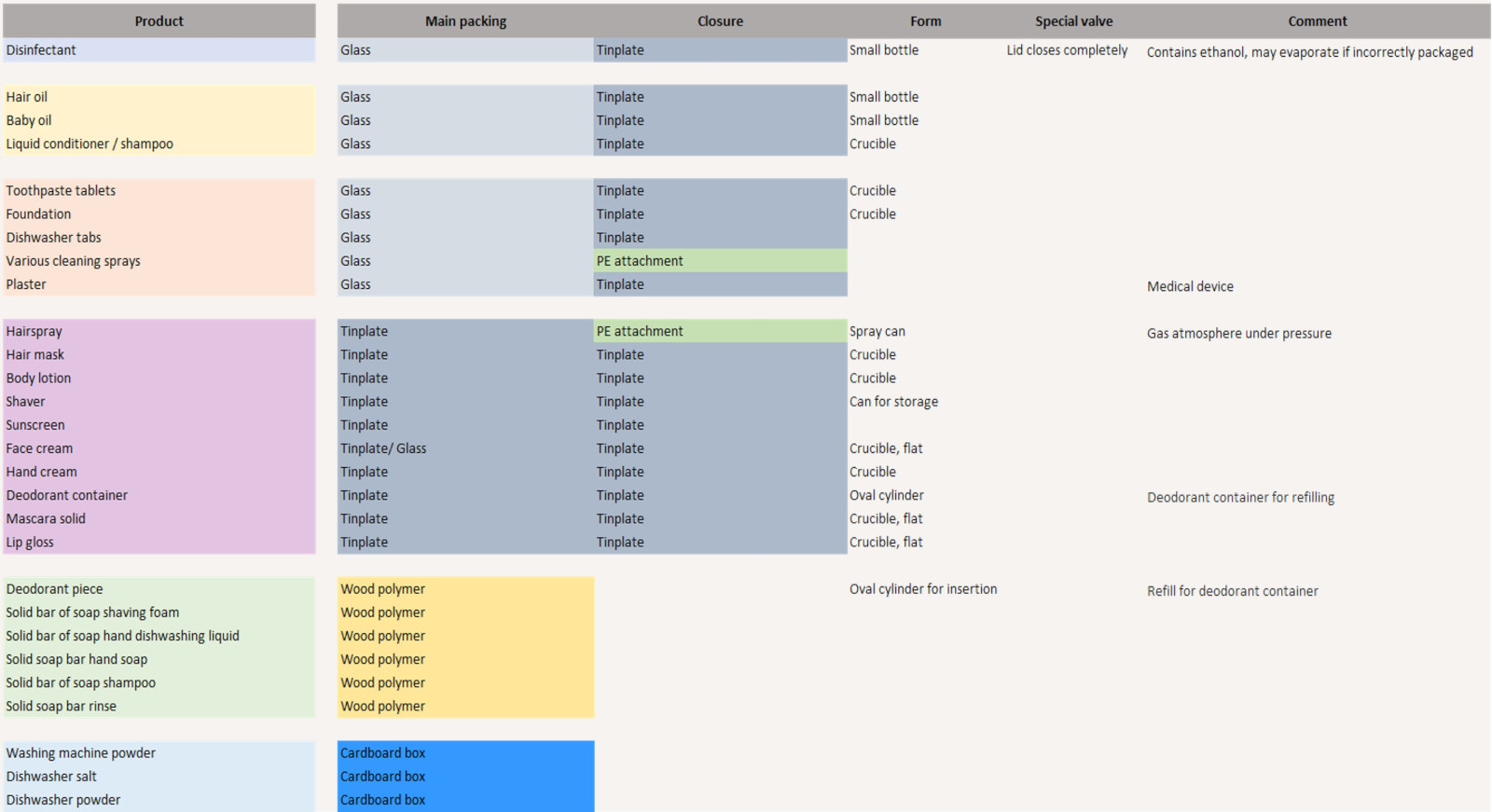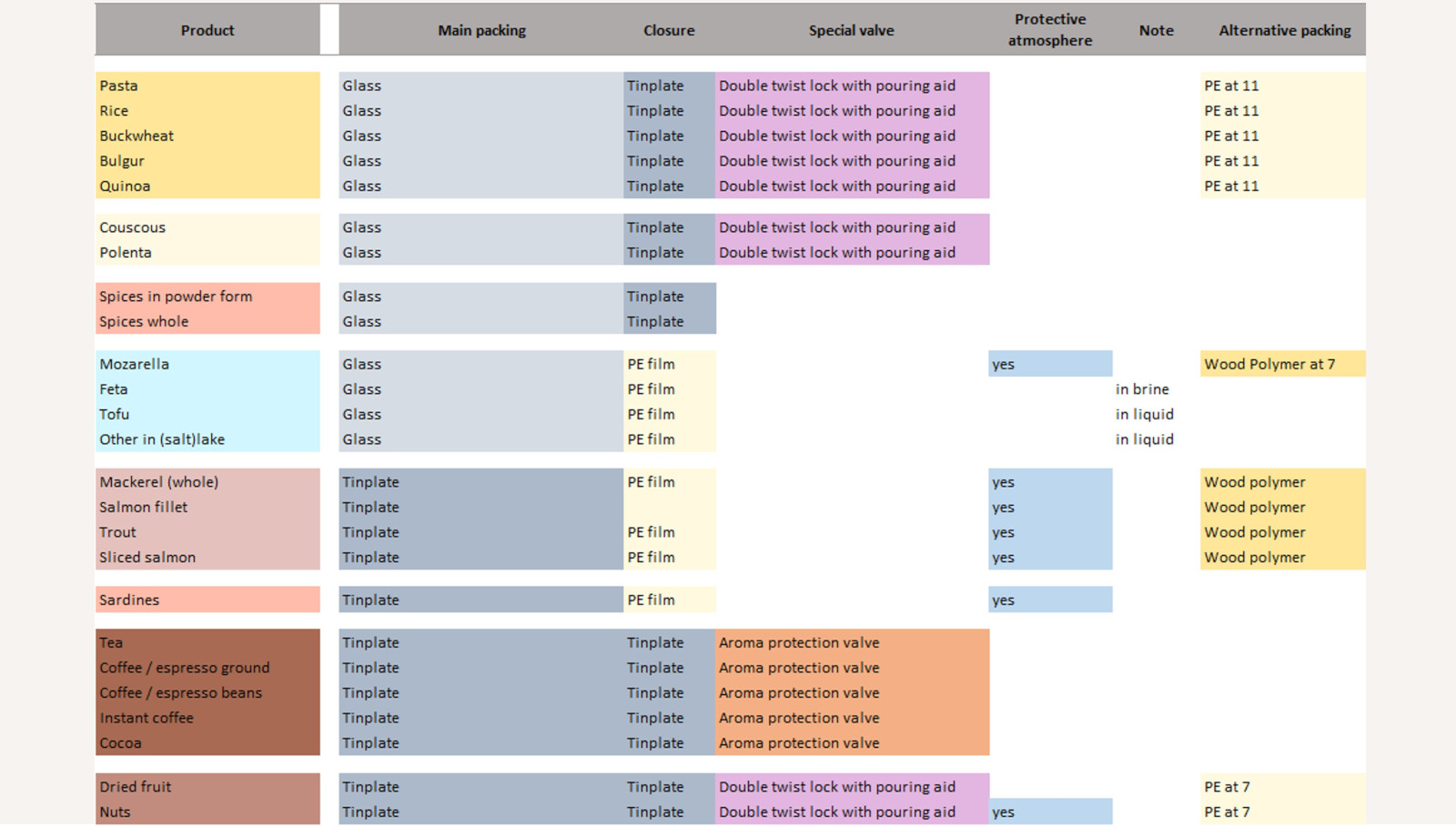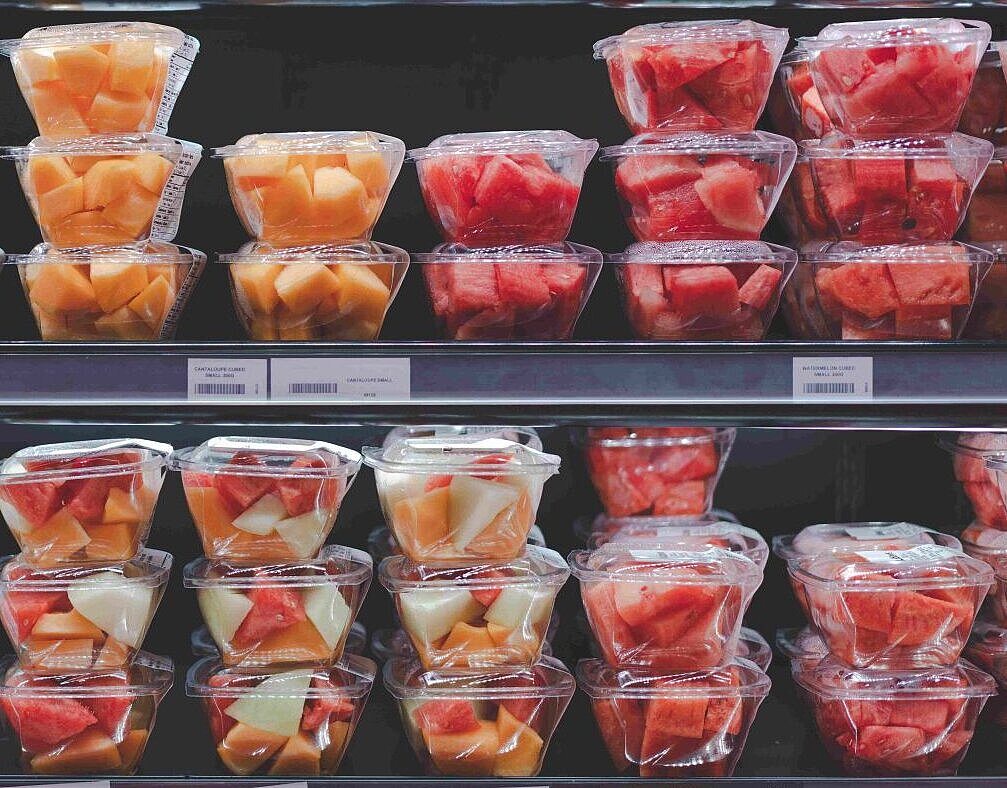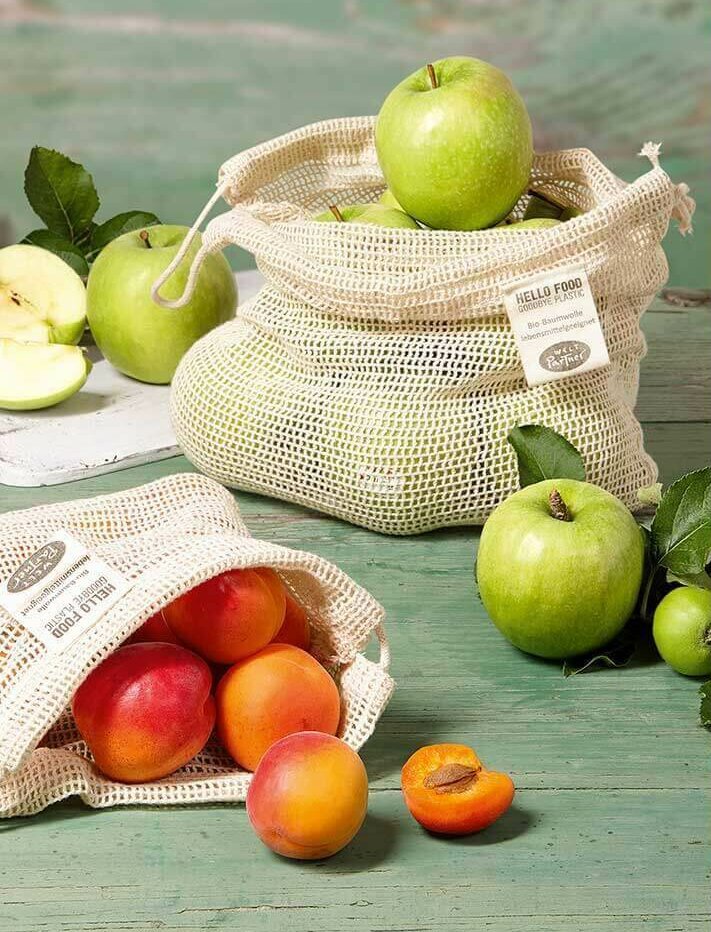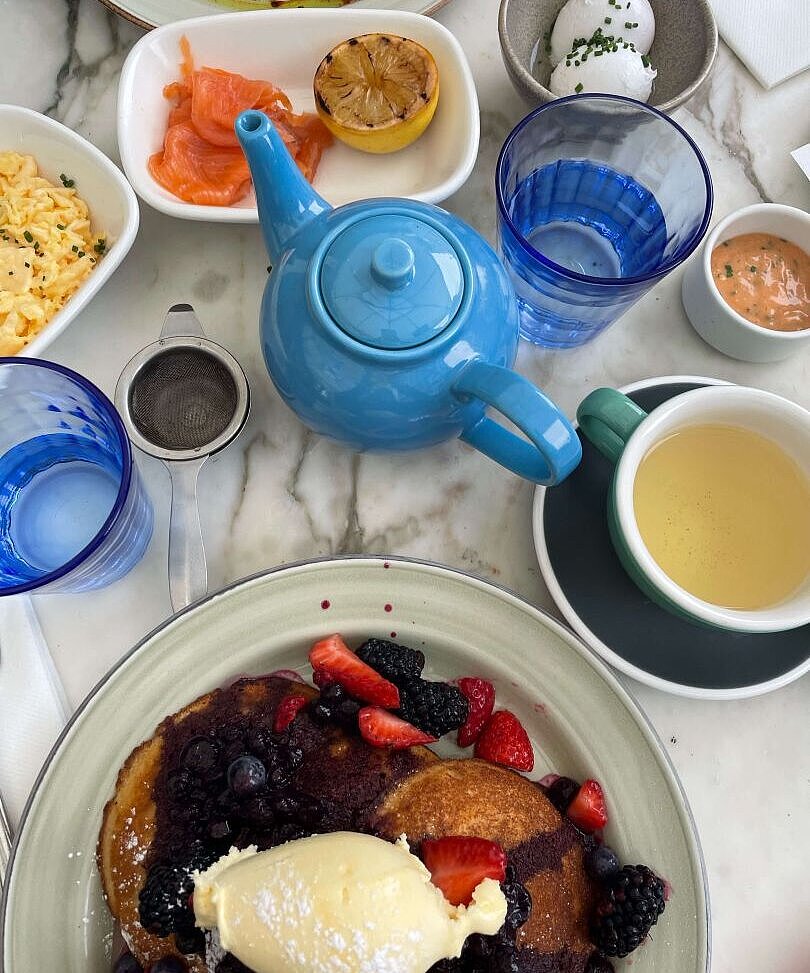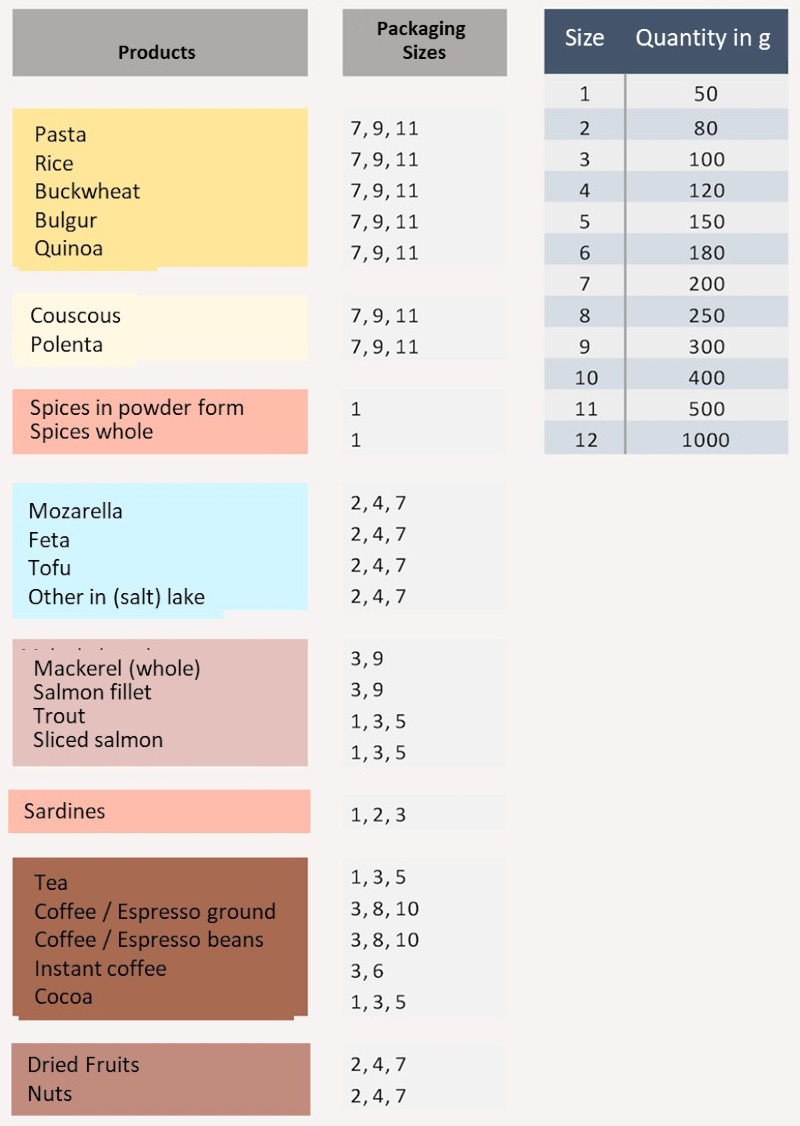Content: With few materials, all assortments in supermarket and drugstore can be packed
In the supermarkets on the Frankurt Bridges, packaging is avoided wherever possible - especially for regional fruit and vegetables.
Suitable packaging was assigned for all common products: If reusable glass or steel packaging came into question, suitable closures were also defined - the latter with corresponding screw caps or sealed swing stoppers. Where modified atmospheres were required, corresponding lid valves were planned. For products that require plastic packaging for reasons of shelf life, bio-based PE is used, e.g. for fresh fish and meat.
In addition, all products, whether perishable like cream cheese or long-lasting like rice, are available in multiple pack sizes. Smaller pack sizes ensure that the contents are used up and not thrown away at home. To prevent the price structure from tempting customers to buy larger packs, prices are set in proportion to the contents.


